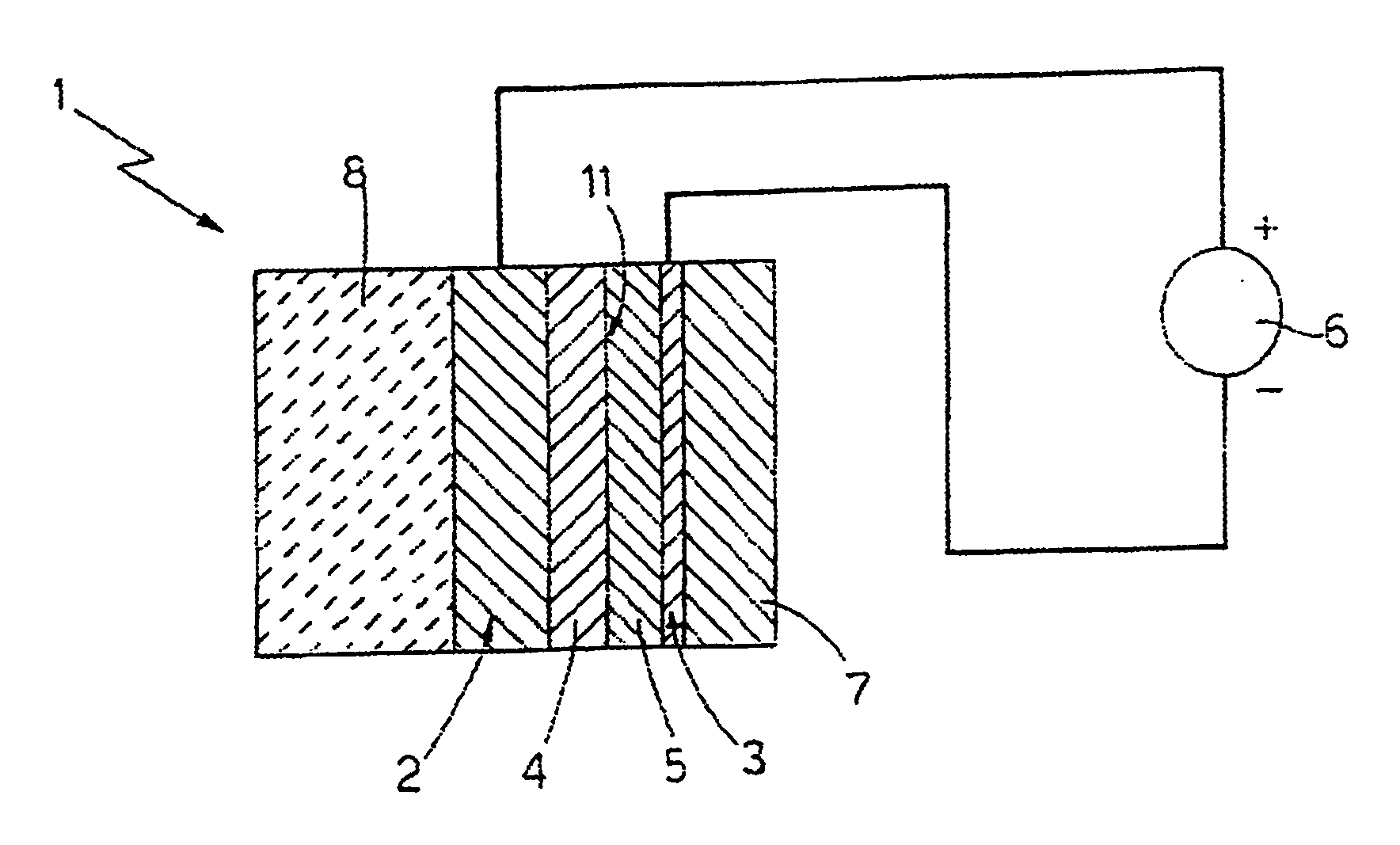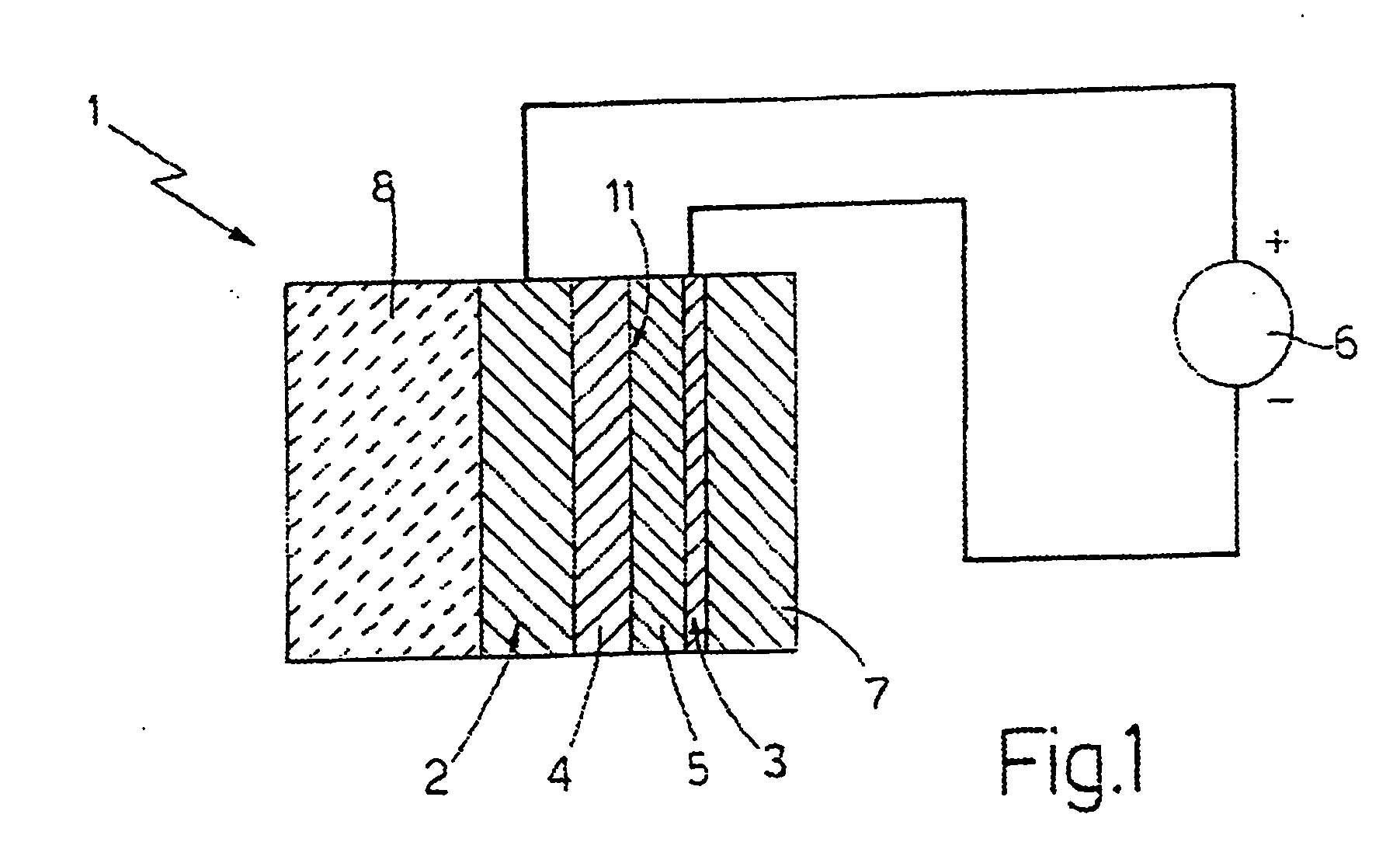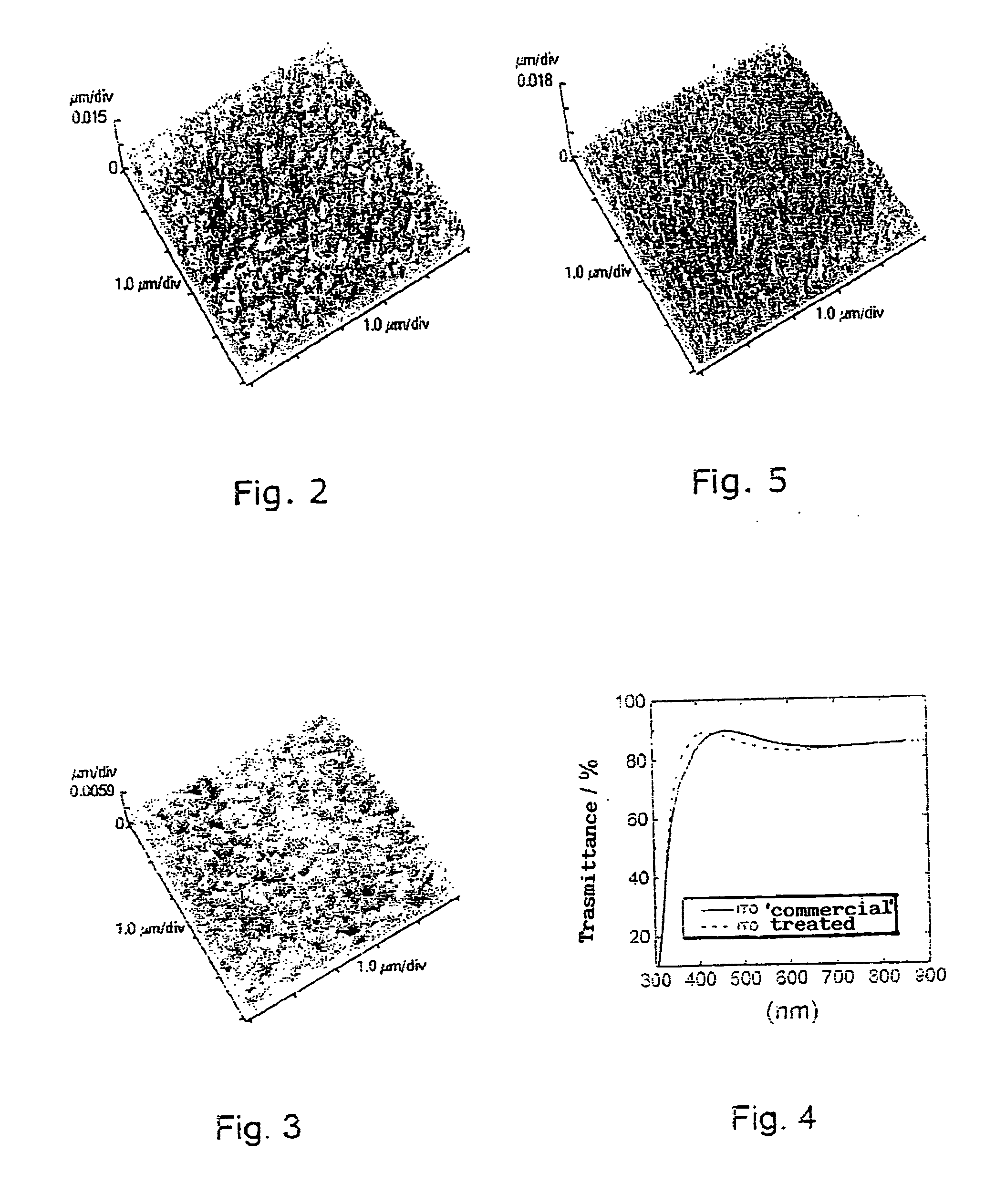Method for reducing the surface roughness of a thin layer of conductive oxides
- Summary
- Abstract
- Description
- Claims
- Application Information
AI Technical Summary
Benefits of technology
Problems solved by technology
Method used
Image
Examples
example 1
[0046] This example describes polishing of a commercially available thin ITO layer.
[0047] A commercially available thin ITO layer, which has a thickness of approximately 100 nm and is supported by a plate of glass, was polished using an abrasive compound and a polishing cloth.
[0048] The commercially available thin ITO layer, the surface morphology of which is illustrated in FIG. 2, was formed by aggregates having planar dimensions of approximately 100-200 nm, with a maximum difference in height between peak and trough of approximately 31 nm and mean roughness of approximately 1.9 nm.
[0049] The polishing cloth was a woven finishing cloth and was made of synthetic fabric. The abrasive compound was obtained by diluting a colloidal solution, which comprised silica particles having a diameter of between 5 nm and 150 nm and dispersed in a basic solution of potassium hydroxide (the colloidal solution used is known by the commercial name Syton HT-50® and is produced by Dupont®), in deion...
example 2
[0052] This example describes polishing of a thin ITO layer prepared in the laboratory.
[0053] A thin ITO layer prepared in the laboratory, which had a thickness of approximately 100 nm and coated a plate of glass, was polished using an abrasive compound and a polishing cloth.
[0054] The thin ITO layer prepared in the laboratory, the surface morphology of which is illustrated in FIG. 5, had aggregates having planar dimensions of between approximately 50 nm and 100 nm, with a maximum difference in height between peak and trough of approximately 54 nm and a mean roughness of approximately 1.9 nm.
[0055] Polishing was carried out according to what is described in Example 1 so as to obtain the treated ITO layer substantially identical to the treated ITO layer described in Example 1.
example 3
[0056] An organic electroluminescent device was prepared in the manner described in what follows.
[0057] A plate of glass coated with a thin ITO layer, which was treated according to Example 1 or Example 2, was cleaned by being dipped in a boiling solution of acetone and alcohol and by subsequently being laid for approximately thirty minutes in an ultrasound washing machine.
[0058] At this point, the following layers were deposited, in succession, one on top of the other, by sublimation in a high-vacuum evaporator and at a pressure of 8×10−4 Pa, on the coated plate of glass: a layer of 4,4′,4′″-Tri(N,N-diphenyl-amino)-triphenyl amine (TDATA) having the thickness of 60 nm; a layer of 3-(4-diphenylyl)-4-phenyl-5-ter-butylphenyl-1,2,4-triazole (PBD) having the thickness of 60 nm; a layer of calcium having the thickness of 25 nm; and a layer of silver having the thickness of 100 nm.
[0059] The ITO layer and the calcium layer were connected to an external generator.
PUM
 Login to View More
Login to View More Abstract
Description
Claims
Application Information
 Login to View More
Login to View More - R&D
- Intellectual Property
- Life Sciences
- Materials
- Tech Scout
- Unparalleled Data Quality
- Higher Quality Content
- 60% Fewer Hallucinations
Browse by: Latest US Patents, China's latest patents, Technical Efficacy Thesaurus, Application Domain, Technology Topic, Popular Technical Reports.
© 2025 PatSnap. All rights reserved.Legal|Privacy policy|Modern Slavery Act Transparency Statement|Sitemap|About US| Contact US: help@patsnap.com



